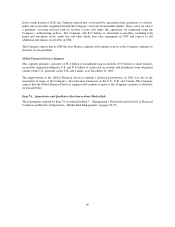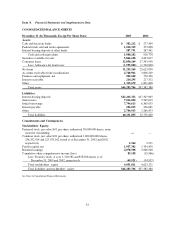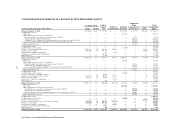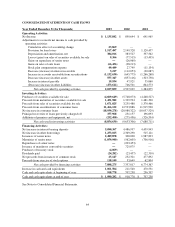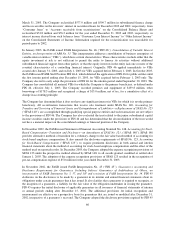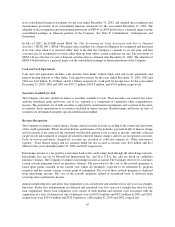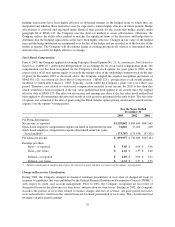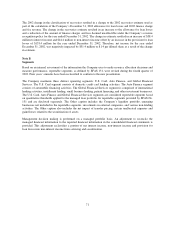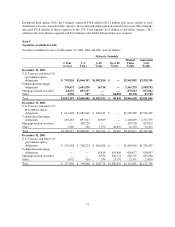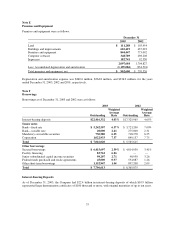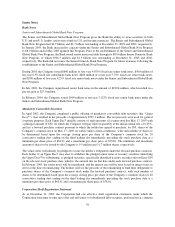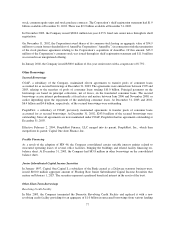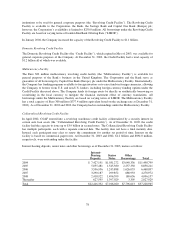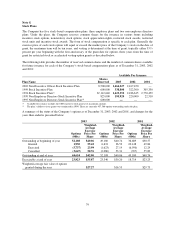Capital One 2003 Annual Report Download - page 87
Download and view the complete annual report
Please find page 87 of the 2003 Capital One annual report below. You can navigate through the pages in the report by either clicking on the pages listed below, or by using the keyword search tool below to find specific information within the annual report.Marketing
The Company expenses marketing costs as incurred. Television advertising costs are expensed during the period
in which the advertisements are aired.
Credit Card Fraud Losses
The Company experiences fraud losses from the unauthorized use of credit cards. Transactions suspected of
being fraudulent are charged to non-interest expense after a sixty-day investigation period.
Income Taxes
Deferred tax assets and liabilities are determined based on differences between the financial reporting and tax
bases of assets and liabilities, and are measured using the enacted tax rates and laws that will be in effect when
the differences are expected to reverse.
Segments
The accounting policies of operating and reportable segments, as defined by the Statement of Financial
Accounting Standard No. 131, Disclosures about Segments of an Enterprise and Related Information, (“SFAS
131”) are the same as those described elsewhere in this footnote. Revenue for all segments is derived from
external parties. Performance evaluation of and resource allocation to each reportable segment is based on a wide
range of indicators to include both historical and forecasted operating results. See Note B, Segments, for further
discussion of the Company’s operating and reportable segments.
Derivative Instruments and Hedging Activities
The Company recognizes all of its derivative instruments as either assets or liabilities in the balance sheet at fair
value. The accounting for changes in the fair value (i.e., gains and losses) of a derivative instrument depends on
whether it has been designated and qualifies as part of a hedging relationship and, further, on the type of hedging
relationship. For those derivative instruments that are designated and qualify as hedging instruments, a company
must designate the hedging instrument, based upon the exposure being hedged, as a fair value hedge, a cash flow
hedge or a hedge of a net investment in a foreign operation.
For derivative instruments that are designated and qualify as fair value hedges (i.e., hedging the exposure to
changes in the fair value of an asset or a liability or an identified portion thereof that is attributable to a particular
risk), the gain or loss on the derivative instrument as well as the offsetting loss or gain on the hedged item
attributable to the hedged risk is recognized in current earnings during the period of the change in fair values. For
derivative instruments that are designated and qualify as cash flow hedges (i.e., hedging the exposure to
variability in expected future cash flows that is attributable to a particular risk), the effective portion of the gain
or loss on the derivative instrument is reported as a component of other comprehensive income and reclassified
into earnings in the same period or periods during which the hedged transaction affects earnings. The remaining
gain or loss on the derivative instrument in excess of the cumulative change in the present value of future cash
flows of the hedged item, if any, is recognized in current earnings during the period of change. For derivative
instruments that are designated and qualify as hedges of a net investment in a foreign operation, the gain or loss
is reported in other comprehensive income as part of the cumulative translation adjustment to the extent it is
effective. For derivative instruments not designated as hedging instruments, the gain or loss is recognized in
current earnings during the period of change in the fair value.
The Company formally documents all hedging relationships, as well as its risk management objective and
strategy for undertaking the hedge transaction. The hedge instrument and the hedged item are designated at the
execution of the hedge instrument or upon re-designation during the life of the hedge. At inception, at least
quarterly or upon re-designation, the Company also formally assesses whether the derivatives that are used in
69



